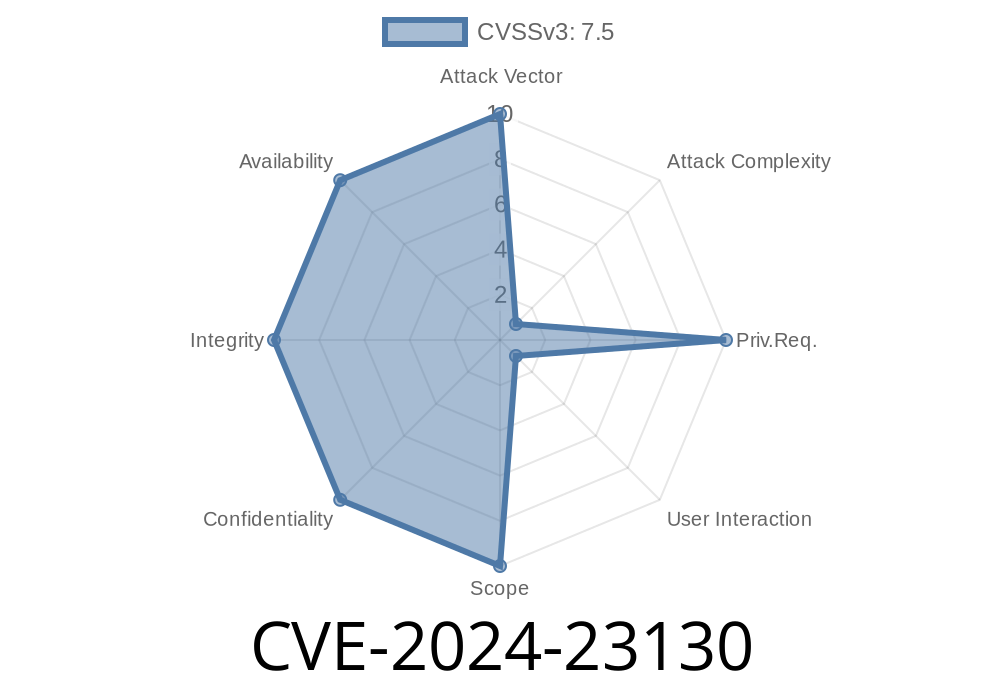CVE-2024-23130 is a critical vulnerability discovered in Autodesk applications, particularly linked to how the ODXSW_DLL.dll library parses SLDASM and SLDPRT files. These are popular file formats for assemblies and parts created in SolidWorks, but also imported across various Autodesk products. This post is your exclusive, straightforward guide to what CVE-2024-23130 is, how it can be exploited, and how you can stay secure.
What is CVE-2024-23130?
This CVE describes a vulnerability where a maliciously crafted SLDASM or SLDPRT file can cause a memory corruption in the Autodesk application parsing it. The underlying issue happens in the ODXSW_DLL.dll library, which handles these file formats. By designing the file in a certain way, an attacker can trigger a write access violation. This kind of bug can sometimes let an attacker run their code on your machine.
Upon parsing, ODXSW_DLL.dll mishandles memory, causing a write violation.
4. This may lead to code execution with the victim’s user privileges, especially if chained with other exploits.
ODXSW_DLL.dll is responsible for parsing SolidWorks files in Autodesk's software.
- Certain file structures or parameters, when malformed, cause the DLL to inadvertently write data at the wrong memory address.
- This is triggered when the application attempts to read fields in a specific section and fails to validate their size or offset, leading to a buffer overflow or similar memory corruption.
Hypothetical Vulnerable Code Snippet
Below is a simplified, illustrative C++ code snippet showing the kind of logic that could cause this issue:
// Vulnerable pseudo code: SLDASM/SLDPRT handler in ODXSW_DLL.dll
void parseSLDPRT(FileBuffer *file) {
char partName[128];
int nameLen = file->readInt();
// No size check!
file->readBytes(partName, nameLen); // If nameLen > 128, buffer overflow!
}
If the attacker sets nameLen in the malicious file to 256, they overwrite memory right after partName. Depending on what’s overwritten, this can lead to a crash, information leakage, or even code execution.
Malicious File Crafting:
The attacker crafts an SLDASM or SLDPRT file with a field like nameLen (or a similar field) set artificially high.
Triggering Memory Corruption:
When parsed, ODXSW_DLL.dll allocates a fixed buffer but copies in too much data, resulting in stack or heap corruption.
Chaining for Code Execution:
By carefully controlling memory, an attacker can overwrite function pointers or return addresses, especially if other weaknesses are present (like lack of DEP/ASLR).
Arbitrary Code Execution:
If successful, the attacker could execute their own code within the context of the Autodesk application—meaning same privileges as the user who opened the file.
Real-World Scenario
Imagine a designer downloads a SolidWorks assembly received via email from a new "client." They open it in Autodesk Inventor or AutoCAD. As soon as the file is parsed, the vulnerability is triggered, leading to possible compromise of the system.
Mitigations
- Update your Autodesk applications as soon as patches are available (see advisory).
- Block or quarantine unknown SLDASM/SLDPRT files especially from untrusted sources.
Original References and Further Reading
- NIST National Vulnerability Database: CVE-2024-23130
- Autodesk Security Advisories
- Autodesk ODXSW Product Documentation
- SolidWorks File Formats Overview
Final Thoughts
CVE-2024-23130 is a serious reminder that even industry-standard design files can be booby-trapped. Always patch your software, train your team to beware of unknown files, and—if you’re a developer—practice strict input validation.
Stay safe, and follow Autodesk Security Advisories for latest updates about this and related vulnerabilities.
*Got more technical questions? Want to see a proof-of-concept? Contact your security team or join the latest Autodesk community security webinars!*
Timeline
Published on: 02/22/2024 04:15:08 UTC
Last modified on: 08/01/2024 13:47:07 UTC
